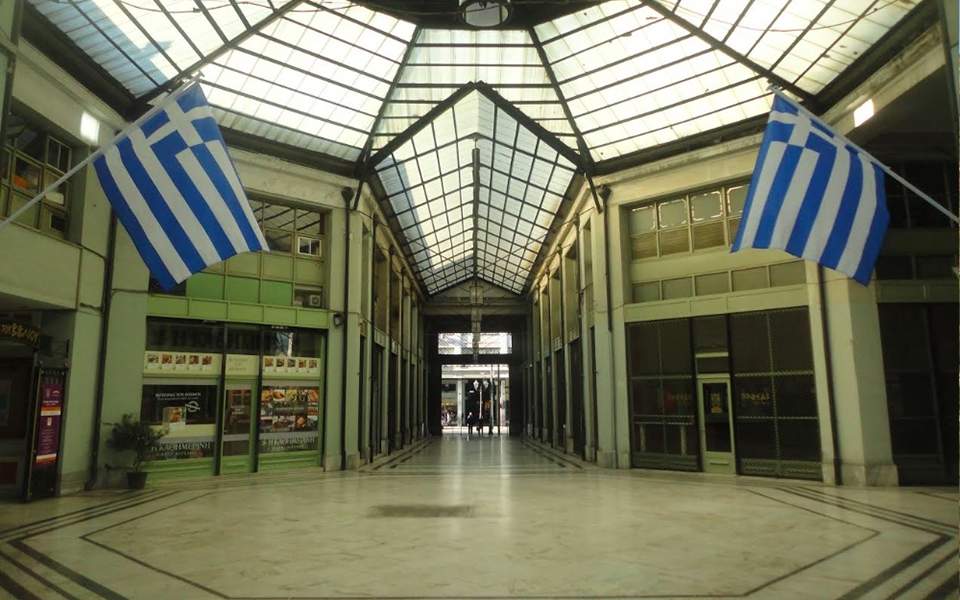Flavors of Greece under one roof

The distance from the Acropolis to Stoa Arsakeio on Stadiou Street can be covered by foot in less than 20 minutes, and while the two points may have little in common right now, Legendary Food is hoping to put the latter up there among Athens’s most visited destinations.
The company has set its sights on the arcade in the Arsakeion building complex with the aim of bringing together artisanal and small-scale producers from all over the country to offer locals and visitors a panorama of Greece’s foods and flavors.
Legendary Food is one of two candidate investors interested in leasing the Arsakeio arcade from its owners, the Arsakeia-Tositseia Schools’ Society for the Promotion of Education and Learning, and the competition for the tender has now entered its third round.
“You cannot have sustainable business activity without a vision and values,” says Aris Kefalogiannis, CEO of Gaea and one of the top executives of Legendary Food. The firm spent four years putting together a business plan for the 10-million-euro investment, which is expected to generate more than 300 jobs and give the arcade a complete makeover. Once the lease is signed, it is estimated that it will take just 18 months to get the project off the ground.
“We plan to work with the best,” says Kefalogiannis, explaining that the company has already reached out to producers and manufacturers.
The focus of the project is a shopping center dedicated to products from artisanal and small-scale producers from different parts of Greece, laid out in a way that allows visitors to take a culinary tour of the country. The company later plans to expand to other major cities abroad – New York, London, Berlin, Istanbul, Melbourne, Dubai and Shanghai – with a similar concept.
“People are hungry for Greek products,” says global branding and advertising guru Peter Economides, who is also one of Legendary Food’s key executives.
The arcade will also host outlets – in shop-in-shop form – representing some of the country’s most emblematic food industry representatives, special areas for cooking classes, tastings and seminars with acclaimed chefs, as well, of course, as restaurants. The company will also be putting a lot of work into an electronic marketplace where small-scale producers can sell their wares to a global clientele, while part of the proceeds of the entire project will be invested in the modernization of production.
Economides brushes off concerns regarding the deterioration in recent years of the area where this significant investment will take place. “Up until the 1990s, the Meatpacking District in New York was a no-go zone. After Apple and several well-known fashion houses opened stores there, though, it turned into one of the city’s hippest area,” he says.
The potential success of such endeavors is already evident in Eataly, an Italian initiative that has grown to more than 40 stores around the world, as well as Time Out Market Lisboa, which opened in 2014 and is now the Portuguese capital’s top tourist destination, and Mercado de San Miguel in Madrid.
Will it work in Greece? “We will never make good Germans, but we can be excellent Greeks, in that we can teach others about the art of living,” says Economides.
The location
Construction of the Arsakeion Mansion, a large residence designed by Lysandros Kaftantzoglou on the corner of Panepistimiou and Pesmazoglou streets, began in 1846. By 1925 it had grown into a complex that took over an entire city block.
Up until the early 1930s, it was home to the Arsakeion and Tositseion schools, which then moved to the northern suburb of Psychico. The main building went on to house the magistrate’s court, the prosecutor’s office and the Athens Court of Appeals, all of which moved out in the late 1970s.
Then, in 1984, the main building was leased by the Greek state and given a complete overhaul so that it could house the Council of State, the country’s highest administrative court.
An old movie theater that had been located in the complex since 1937, the Orfeas, was demolished as part of the revamp, making way for the Stoa tou Vivliou book arcade and the atrium as we see it today.
Up until a few years ago, the arcade was bustling with business thanks to a number of shops, mostly high-end leather stores and booksellers. The crisis, however, forced most of them to close down.
The entire complex is listed as a historical building.





